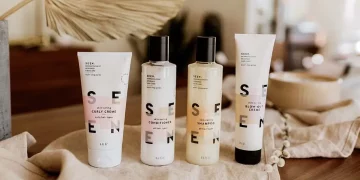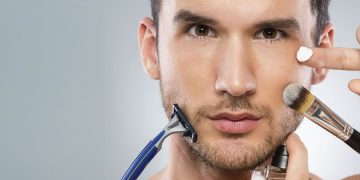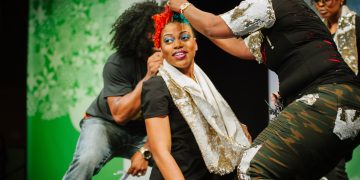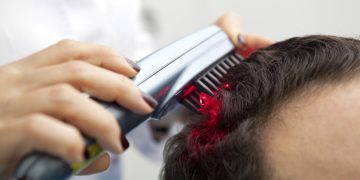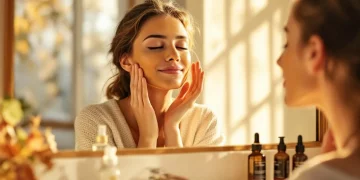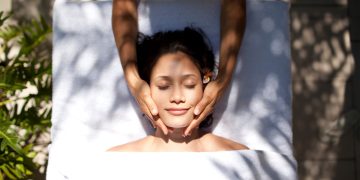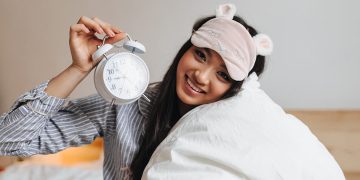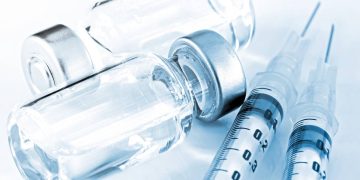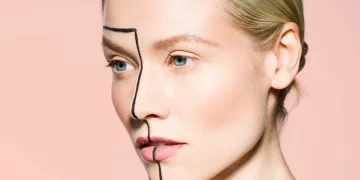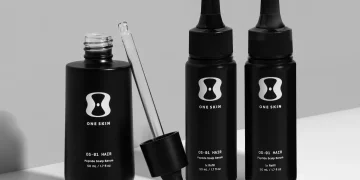The quest for longer, thicker, and more abundant hair has spawned a multi-billion-dollar industry, built as much on hope as on science. From ancient folk remedies to modern high-tech gadgets, the market is saturated with promises that often blur the line between proven efficacy and clever marketing. It can be overwhelming to discern which strategies are worth your investment and which are merely perpetuated myths. When faced with hair thinning or a simple desire for accelerated growth, how do you separate the signal from the noise?
This article cuts through the hype to examine the scientific evidence behind three of the most popular hair growth interventions: the traditional practice of scalp massage, the burgeoning market of hair growth supplements, and the technological promise of laser combs. By analyzing clinical data and consulting dermatological principles, we will demystify what truly works, what shows potential, and what is best left behind.
The Truth About Stimulation: Scalp Massage Under the Microscope
The Myth: Regular scalp massage can significantly increase blood flow to hair follicles, delivering a surge of oxygen and nutrients that dramatically accelerates hair growth.
The Fact: While scalp massage is beneficial for overall scalp health and well-being, its direct impact on hair growth is more nuanced and less dramatic than often claimed.
The theory seems logically sound: increased blood flow should equate to better-nourished follicles. However, the reality is more complex. The human scalp is already one of the most vascularized areas of the body, and it’s unlikely that massage can induce a level of increased circulation that would fundamentally change the metabolic rate of hair follicles in a healthy individual.
Where science does find value is in two key areas:
- Reduction of Perifollicular Fibrosis: A 2016 Japanese study published in the journal Eplasty provided the most compelling evidence for massage. In the study, participants performed daily standardized scalp massage for several minutes. The results showed a self-reported increase in hair thickness over 24 weeks. The researchers hypothesized that the mechanical force of the massage wasn’t primarily stimulating blood flow, but rather stretching the dermal papilla cells within the follicle. Over time, this stretching may help to counteract a subtle hardening of the tissue around the follicle (perifollicular fibrosis), which is associated with the miniaturization process in pattern hair loss. In essence, massage may help to maintain a more optimal physical environment for the follicle to function.
- Stress Reduction: The psychological benefits of scalp massage are undeniable. As a form of self-care, it can activate the parasympathetic nervous system, reducing levels of the stress hormone cortisol. Since chronic telogen effluvium (temporary shedding) is a well-known consequence of high stress, regular massage can be a supportive practice for managing stress-related hair loss.
The Verdict: Scalp massage is a low-risk, pleasurable practice that can contribute to a healthy scalp environment and may help mitigate some aspects of hair thinning by reducing tissue stiffness. However, it should not be considered a standalone treatment for significant genetic hair loss (androgenetic alopecia). It is a supportive therapy, not a cure.
The Supplement Dilemma: Pills, Potions, and Proven Ingredients
The Myth: Taking a daily “hair, skin, and nails” supplement will transform thin, slow-growing hair into a luxuriant mane, regardless of the underlying cause of hair issues.
The Fact: Supplements are only effective if you have a documented deficiency in the specific nutrients they contain. For individuals with a balanced diet, the benefits are often minimal to non-existent for treating genetic hair loss.
The hair growth cycle is an incredibly complex and energy-intensive process. It requires a steady supply of amino acids, vitamins, and minerals to function optimally. However, the body’s priority system will always shunt nutrients to vital organs first; hair follicles are a lower priority.
Let’s examine the evidence for common supplement ingredients:
- Biotin: This is the most famous hair vitamin. The myth is that mega-doses of biotin will make anyone’s hair grow faster. The Science: Biotin deficiency does cause hair loss, but it is exceptionally rare in people eating a standard diet. There is no conclusive scientific evidence that supplementing with biin promotes hair growth in healthy, well-nourished individuals. The perceived results are often due to the “placebo effect” or the fact that the supplement is correcting an undiagnosed, mild deficiency.
- Collagen Peptides: The claim is that consuming collagen provides the direct building blocks for hair. The Science: Hair is primarily made of keratin, not collagen. While some small studies suggest collagen peptides may provide amino acids that support the hair follicle’s microenvironment and antioxidant status, the evidence is preliminary. It is not a primary or proven treatment for hair loss.
- Viviscal® & Nutrafol®: These are comprehensive supplement systems that represent the more science-backed end of the market.
- Viviscal contains a proprietary marine complex, along with biotin, zinc, and Vitamin C. Some independent studies have shown it can increase the number of terminal (thick) hairs in women with self-perceived thinning.
- Nutrafol uses a blend of botanicals like saw palmetto (which may act as a mild anti-androgen), ashwagandha (for stress), and other ingredients. Their clinical studies, often funded by the company, show promising results in reducing shedding and improving hair growth.
- The Critical Caveat: For supplements like these to work, the underlying cause of hair loss must be related to the factors they target, such as mild androgen sensitivity, stress, or oxidative damage. They are generally ineffective against advanced genetic balding.
The Verdict: Before investing in supplements, get a blood test to check for deficiencies in Ferritin (iron storage), Vitamin D, and Zinc—all known contributors to hair loss. Targeted supplementation to correct a deficiency can yield dramatic results. For others, a high-quality supplement may offer a marginal improvement as part of a holistic approach, but it is not a magic bullet.

The Low-Level Light Controversy: Demystifying Laser Combs and Helmets
The Myth: At-home laser combs and helmets can reverse hair loss by “stimulating” dormant follicles with therapeutic light energy.
The Fact: Low-Level Laser Therapy (LLLT) is an FDA-cleared treatment for pattern hair loss with a body of clinical evidence, but its efficacy is modest, and results are highly variable.
The science behind LLLT, also known as photobiomodulation, is not about heat or “stimulation” in a mechanical sense. It involves exposing cells to low levels of red and near-infrared light. The photons of light are absorbed by the mitochondria within the follicle cells, theorized to:
- Enhance cellular energy (ATP) production.
- Reduce inflammation and oxidative stress.
- Improve blood flow and encourage a longer growth (anagen) phase.
The Clinical Evidence:
Numerous studies have investigated LLLT. A systematic review of randomized trials has concluded that LLLT can lead to a statistically significant increase in hair density and diameter in both men and women with androgenetic alopecia. However, the key words are “modest” and “variable.”
- It’s a Treatment, Not a Cure: LLLT is best for those in the early to moderate stages of hair loss, helping to thicken existing miniaturizing hairs and slow progression. It cannot resurrect completely dead follicles that have been inactive for years.
- Consistency is Non-Negotiable: The treatment requires a strict commitment, typically every other day for 20-30 minutes, for 6-12 months to see initial results. This is a significant time investment.
- Device Quality Matters: The wavelength, power output (fluence), and design of the device are critical. FDA-cleared devices have undergone testing to prove they are safe and may promote hair growth, but the level of efficacy can differ between brands.
The Verdict: LLLT is one of the few at-home treatments with legitimate, science-backed potential. It can be a useful part of a multi-pronged approach, often combined with topical minoxidil. However, manage your expectations. The results are gradual and subtle, not transformative. It is a long-term management strategy, not a quick fix.
Conclusion: A Scientific Path Forward for Hair Health
Navigating the world of hair growth requires a healthy dose of skepticism and an evidence-based mindset. The most effective strategy is rarely a single miracle product but a targeted, multi-factorial approach.
- For Scalp Massage: Embrace it as a wellness practice. It can reduce stress and potentially improve follicle health, but don’t rely on it alone to combat genetic hair loss.
- For Supplements: Investigate before you invest. Rule out underlying deficiencies with a doctor, and understand that over-the-counter supplements are most effective for correcting those deficiencies or as a mild, supportive aid.
- For Laser Therapy: Consider it a legitimate, long-term commitment for early-stage thinning. It has proven, albeit modest, efficacy and can be a valuable tool when used consistently and with realistic expectations.
The most powerful, scientifically-proven treatments for pattern hair loss remain topical minoxidil and oral finasteride (for men). These work by directly countering the hormonal and inflammatory processes that cause follicles to miniaturize. Any other intervention, including those discussed here, should be viewed as a potential adjunct to these medical standards, not a replacement.
Ultimately, the key to healthy hair growth lies in accurate diagnosis. Consult a board-certified dermatologist to understand the root cause of your hair concerns. With a clear diagnosis, you can build a personalized regimen based on fact, not fiction, and invest your time and money into strategies that science actually says will work.














